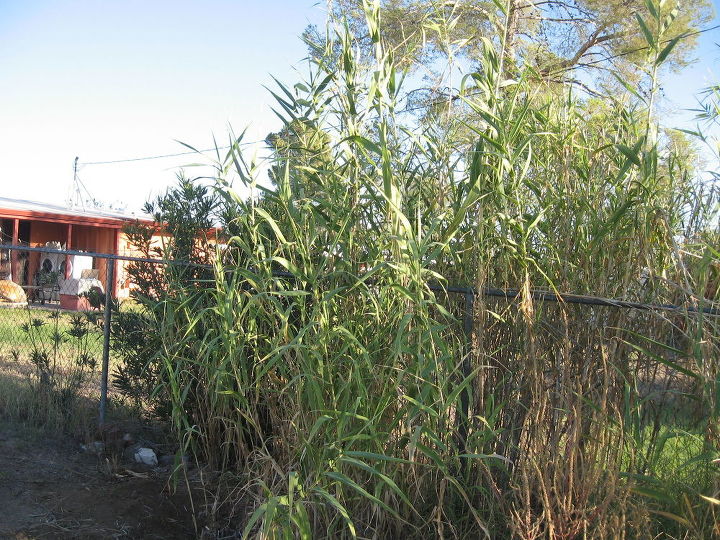How do I get rid of this plant and roots?

Does anyone know how to get rid of these roots for this plant? Our neighbor has them on her side of the fence and
have spread to our side. I tried to dig out the root, but is is so large, it covers 10 X 12 foot.
Related Discussions
GNATS - How to get rid of them?
Somehow my house and garden got tiny gnats that killed my fuchsia plant and fly everywhere. I have tried ALL the Web recommendations - soap and oil dishes, sand in th... See more
Marigolds growing! Should I pinch the buds?
My marigold plants are growing. I heard that pinching the buds until Autumn will allow them to grow without killing the plant. Is this true?
Growing garlic
Growing our first garlic, should we wait until the leaves are drying out before we pick it? Husband picked first one today along with our first potatoes.
How to keep mice out of your garden?
Hi everyone, I have mice in my garden destroying my vegetables and I have also noticed them in the barn and shed. Please can someone tell me how to prevent them from ... See more
What's the best flower/plant to grow in Texas?
I know that opinions vary, but what's your opinion?!I have great luck w Rosemary plants. Green all year long.
How do I get rid of hydrangea roots? I keep digging and finding more!!
How do I get rid of plants with tubular roots (other than weed killer)
was given violet looking plants to put around flower bed several years ago. Have tried digging up and they have tubular roots. Now are spreading in grass, and weed ki... See more




That looks like bamboo and it is very hard to get rid of. Eliminating bamboo plants starts with a shovel. The creeping rhizomes and roots of bamboo are virtually immune to the herbicides people normally use on unwanted plants. In order to start to get rid of bamboo, you must physically dig up the offending clump. Make sure you remove as much of the roots as possible.
Also try reading this website for additional info.
No it is not bamboo, but I think it is in the family.
if it is related to bamboo - you must get all the roots - they shoot out babies underground.
This is Johnson grass. Here's some info: https://www.gardeningknowhow.com/plant-problems/weeds/controlling-johnson-grass.htm
I think this may be Giant Reed Grass (Arundo donax) native to the Mediterranean. It's hard to tell from a single photo, though. https://www.texasinvasives.org/plant_database/detail.php?symbol=ARDO4 It grows to 20' tall, producing seed heads in late summer/early fall.
Even when it looks dead it can rejuvenate. Some 40 years ago I tried to use some "dead" canes as plant stakes in my garden. After only 1 week I noticed the stakes were sprouting, so I immediately pulled them up. Stems clog waterways, sometimes causing damage to bridges and roads during floods. The canes ignite readily and burn intensely. This plant provides no benefit to wildlife. Its leaves contain chemicals harmful to herbivores.
If this is Arundo donax, my advice is to cut it down and burn the stems and leaves to ash. If you can't burn it, put it in garbage bags and set it out with the trash. Do not attempt to compost it. Then use roundup on the base to hopefully kill the roots. Apply herbicide again on new growth, especially in the spring.
Locally many people call this grass Georgia Cane, but that name also is applied to another grass which is also known as Giant Cane (Arundinaria gigantea). https://en.wikipedia.org/wiki/Arundinaria_gigantea This grass is native, so before you go out and kill everything make sure you know what you are dealing with. Common names are often applied to several unrelated species. If at all possible give the genus and species name in addition to the common name.